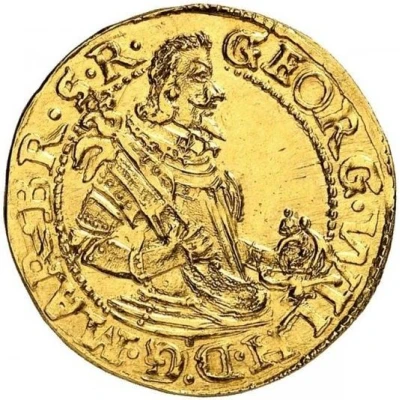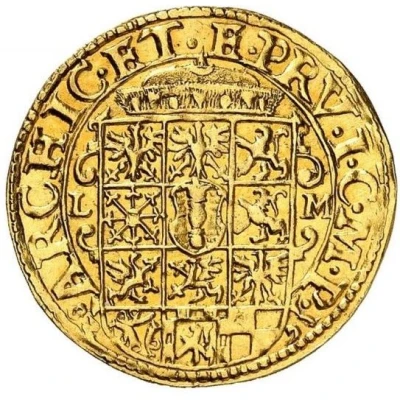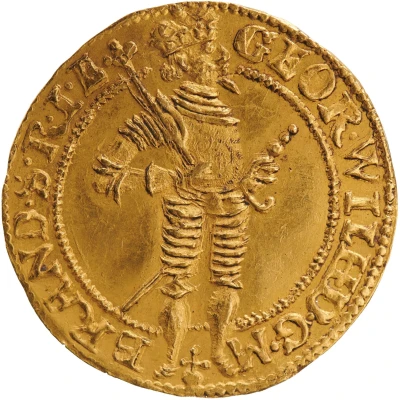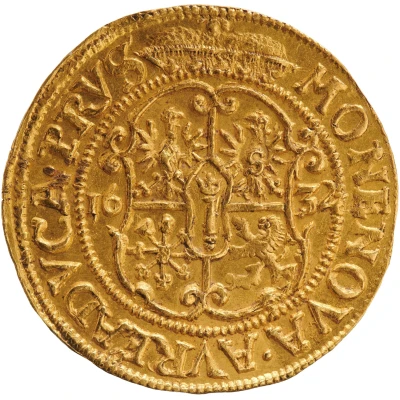


© Münzkabinett - Staatliche Museen zu Berlin (CC BY-SA 4.0)
1 Goldgulden - George William
1628 year| Gold (.986) | 3.22 g | 23 mm |
| Issuer | State of Brandenburg-Prussia (German States) |
|---|---|
| Margrave | George William (Georg Wilhelm) (1619-1640) |
| Type | Standard circulation coin |
| Year | 1628 |
| Value | 1 Goldgulden (3.5) |
| Currency | Thaler (1618-1701) |
| Composition | Gold (.986) |
| Weight | 3.22 g |
| Diameter | 23 mm |
| Shape | Round |
| Orientation | Medal alignment ↑↑ |
| Demonetized | Yes |
| Updated | 2024-10-04 |
| Numista | N#412953 |
|---|---|
| Rarity index | 100% |
Reverse
Crowned arms in inner circle.
Script: Latin
Lettering:
ARCHIC ET E PRV I C M P
L M
16 Z8
Comment
Cöln (Berlin) Mint
Interesting fact
One interesting fact about the 1 Goldgulden coin from the State of Brandenburg-Prussia is that it was minted during a time of great economic and political change in Europe. The coin was issued in 1628, just a few years after the Thirty Years' War had devastated much of the continent, and it marked a significant shift in the way that currency was produced and used. The use of gold in the coin's production was a deliberate choice, as it was seen as a stable store of value and a symbol of wealth and power. The coin's design, featuring George William, the ruler of Brandenburg-Prussia, was also a statement of the region's growing influence and prosperity. Overall, the 1 Goldgulden coin is a fascinating piece of history that provides a glimpse into the complex economic and political landscape of 17th-century Europe.



